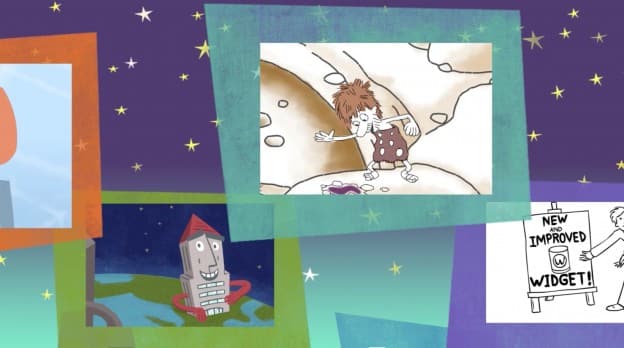We all know that company explainer videos should be compelling. But, of course, that’s one of those things that’s easier said than done. And it’s a task that’s made even harder when you factor in that “compelling” is not a yes-or-no binary function. It’s not as simple as “this explainer is compelling” or “that explainer is not,” but rather a spectrum of engagement/entertain that often fluctuates through a video.
Meaning that while a video may start off “very compelling,” it could quite easy lose that momentum just a few seconds later. Which is a big problem as you don’t want to lose viewers before hitting the meat of your message and the call to action. Or consider, conversely, an explainer with a compelling ending, but suffers from a weak beginning. Or middle. What good is a compelling ending if viewers are no longer watching? Viewer or creator, that’s not what you want. You want something that starts strong, ends strong and remains engaging and entertaining in between. So today let’s look at 6 tips to keep your explainer video compelling from start to finish.
1. Use Recurring Elements
One way to help keep viewers compelled is by using recurring elements throughout your explainer video. These can be visual cues, memorable compositions or, most likely, characters. By using a central protagonist (or protagonists), you are simultaneously able to retain viewership and build a connection with the audience.
It’s kind of like the explainer video equivalent of putting a face to a name. Things like concepts, brands and services can not only be hard to understand but they can often be hard to form an emotional connection with. If your explain features characters, however, there is a way to build that bond and grab a viewer’s attention every time he or she appears on screen.
2. Keep It Moving
The easiest way to lose a viewer’s interest is by becoming stagnant. So there’s two areas that must always–in some way or another–keep on moving along:
- The Visuals: Try to make sure there’s always something moving. It doesn’t need to be a lot, but enough to maintain momentum. Put another way: don’t ever let the viewer accidentally think that his or her computer is frozen.
- The Message: It can be harder to measure if a measure is “moving” or not, but that doesn’t mean it’s any less important. The idea here is to build off of the information that’s come before and continually progress the overall narrative and the specific pieces of information. A good way to test this is by experimenting with lines from the voice-over in other places in the script. If you find that it doesn’t really matter where the line goes (it could seemingly fit anywhere!) then that line probably needs work. Ideally, you’d like for each line to feel like it was specifically built for that section of the script so that viewers will want to stick around to see where all of this is leading.
3. Consider Whiteboard Animation (i.e. RSA Animate, Video Scribing)
By “Consider Whiteboard Animation,” we don’t simply mean selecting that animation technique for your video. We mean that even if you’re explainer uses motion graphics, character animation, CGI or something else, the principles of what make whiteboard animation compelling can be valuable to your preferred technique. In particular, the idea of “process.”
If nothing else, whiteboard animation is an excellent way to depict processes. The format– in which lines are literally progressing before the viewer’s eyes–lends itself to deconstructing bigger concepts in an accessible way. The viewer feels invested in what’s happening in screen because they are instinctively asking themselves “what’s next?” So, working backwards, a good way to try and re-create that feeling in a non-whiteboard setting is by leveraging the power of process. By breaking down something bigger into smaller slices, you are able to make things more accessible and help set an expectation what what is to ensue.
4. Surprise The Viewer
Nothing keeps a viewer on their toes and curious to keep watching like the element of surprise. And by “surprise,” we don’t mean someone jumping on screen to try and scare the viewer, we mean a surprising choice in the audio or video. These unexpected choices should only occur sporadically as you don’t want to derail the expectations you’ve set for the viewer, but every os often it can be a boost of excitement to zig when they’re expecting a zag.
5. Evaluate the Explainer Video As A Whole, But Also In Pieces
Even though our goal is to create a compelling experience from start to finish, it can be hard to evaluate these things as the creator. Especially when you are a stakeholder who is watching the explainer video several times. To avoid viewing fatigue or the trap of re-perceiving the video the same way, it’s often wise to break the explainer down into smaller segments and look at those individually. It’s similar to how a movie director doesn’t edit his film by watching it over and over start to finish, but rather the director evaluates scenes individually and then will see how everything integrates. Taking this approach will not only provide a fresh way of looking at things, but it will inherently help you see the forest for the trees.
6. Now You Know Your ABC’s
Throughout several of the points above, we’ve touched on the idea of progression. This idea that A leads to B leads to C and so forth. To extend that analogy, let’s consider the alphabet song we all sung as kids. It’s a song that, ultimately, was created to teach children the alphabet and, not unlike an explainer video, engages and entertains for the sake of education.
Well, how does the alphabet song end? Do you remember? After X-Y-Z comes “Now I know my ABC’s.” that may seem like a silly throwaway line, but it actually has a lot of value. It’s a moment of self-reflection and empowerment for the learner. Similarly, that’s a feeling we want to create for the viewer (though, of course, on a more complex level!) when we reach the end of our explainer. A sense of empowerment that will spur them to take action.





